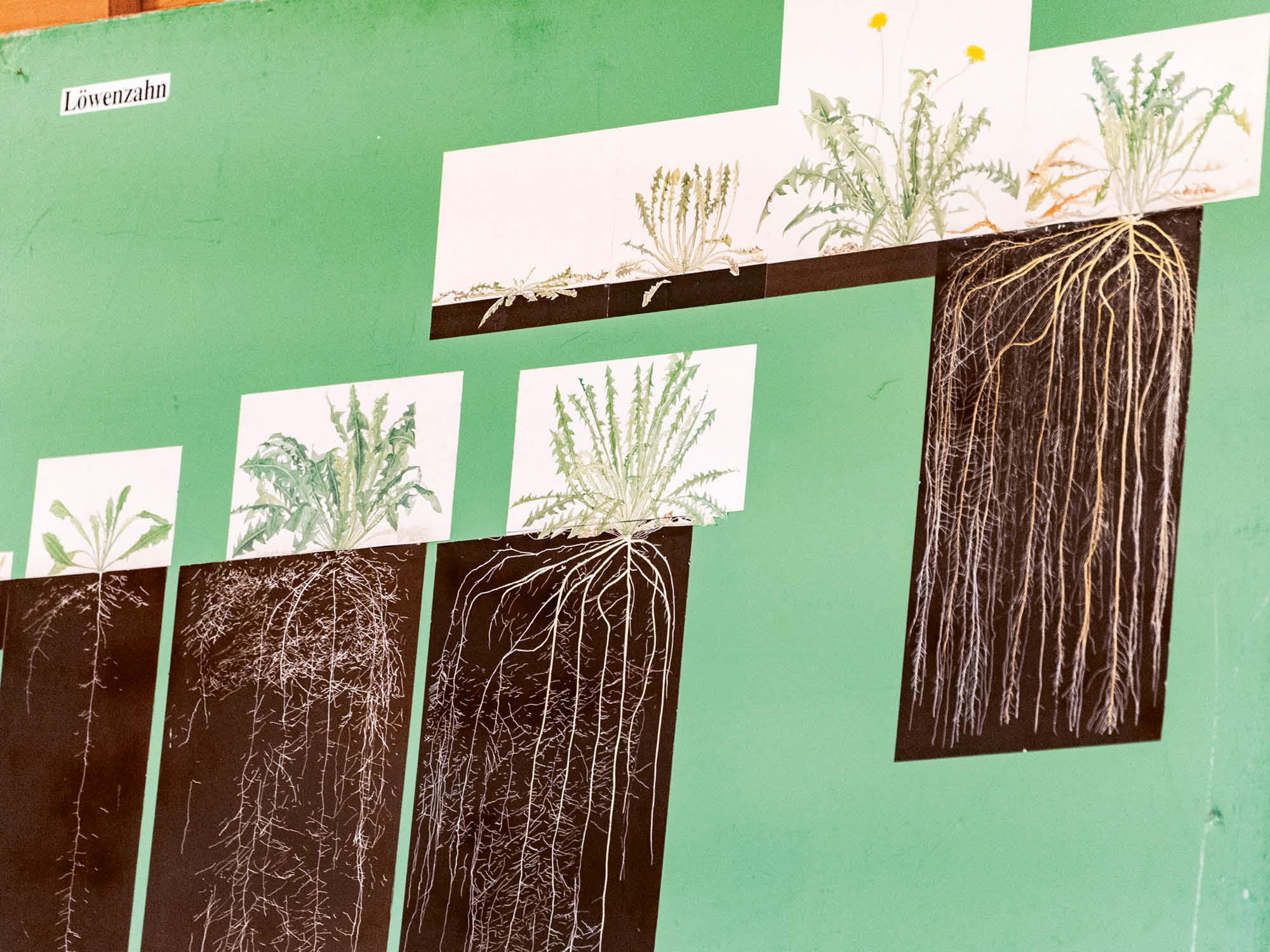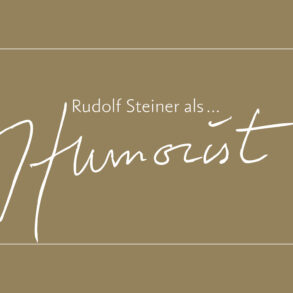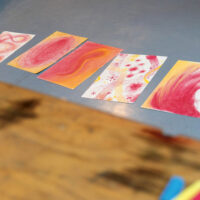Ueli Hurter and Matthias Rang discuss how to think about the Earth as a living being and how this living understanding creates a new substance. The second of three dialogues that were inspired by working together with the Michael Letter “The Task of Michael in the Sphere of Ahriman” and held during the Agriculture Conference in Dornach, 2025.
Matthias Rang: Thinking creates distance. For instance, we can look at the Earth from the outside. We see it as a blue planet, a wonderful sphere. From the outside, the Earth appears wonderfully bounded and finite. But our atmosphere extends out into space, beyond the sphere of the moon’s orbit. The air envelops the Earth. So, we have two extremes: the solid in this strongly boundaried “Earth body” with the Earth’s crust, and the atmosphere, in this light, fluidic, nearly unobservable form. In between lies a thin layer of connection: water. Where there’s water, there’s life on Earth. Life, the biosphere, is like a moment of connection. If we go further out, Earth becomes smaller and smaller; we see the sun and other planets. There, the Earth is also like a place of connection between the hot, centric sun and the very distant, wonderous, but incredibly cold sphere of stars.
Ueli Hurter: As a farmer, I feel the living soil under my feet. When I walk across the fields in winter, I think back to what happened in this place last season, what this Earth has borne as fruit. Will it really come to life when spring begins? Is this already feeling or thinking about the living Earth? Do farmers think with their hands?
The living Earth is not only the basis for our agricultural activity but also the result of this activity. An organ that’s part of an organism is always in this kind of relationship. What organ is the soil in our farm organism? Rudolf Steiner compares the soil with the diaphragm. The diaphragm isn’t simply a membrane; it is muscular. It has smooth muscles that are stimulated by the vegetative (autonomic) nervous system without our conscious will. But it also has striated (transverse) muscles that we can activate with our will. This is the same image we see in our soil. Without us doing anything, the soil breathes in the rhythm of the day and the year. At the same time, we can make the soil sing when we give it the right rhythm. Now, we come to a place where our perspective has to be inverted. Steiner says (and he’s not the only one) that what we have above our diaphragm, the agricultural organism has below the soil. Where we have our head and thinking, the plant has its roots. What we have as digestion, below the diaphragm, the Earth, in the agricultural organism, has above the soil, in the plant. The plant actually grows from the “top” downwards. Through its metabolism’s connection with the cosmos, it acquires new life substance from light, warmth, and oxygen and brings this down into the Earth. There, it is “perceived” and “thought about.” A stream of salty juices rises from the roots up into the plant. We can’t actually compare this process with our nutrition; it’s rather more akin to our “cognition,” in the way the roots make something available to what is above.
MR: In the natural sciences, it’s taken quite a long time to change our picture of how life originated. It’s not the case that conditions for life were created at some specific moment in evolution. The Earth, as a living organism, created its own conditions for life from the very beginning. Life creates its own habitat, its own living space. If we humans continue to forge ahead with industrialization, the Earth will change from a living space to an industrial space. There is no economy that’s not a circular economy. The only question is: how big is the cycle and how long will it take? If we consider oil, we have a circular economy that retransforms the Earth back to a few billion years ago. What we do will not be without consequences for the Earth. We will transform the Earth into the form in which we conduct these processes of life and industrialization. What we do, we will harvest for our entire existence on the Earth.
UH: How much do we, as co-creators, endanger the Earth, and how much do we help it continue to its next stage of development? This is addressed in Rudolf Steiner’s Michael Letter [in Leading Thoughts], “The Task of Michael in the Sphere of Ahriman”: “What began five hundred years ago for human consciousness specifically, had already taken place for the wider sphere of humanity’s entire being at the time when the Mystery of Golgotha took place in earthly manifestation. It was then that, imperceptibly to the consciousness of the majority of human beings at that time, human development gradually glided out of a world in which Ahriman had little power into one in which his power is great. This gliding into a different stratum of the world reached its fulfillment in the fifteenth century. Ahriman’s influence upon the human being in this stratum of the world is possible and can act so devastatingly because, in this stratum, the activity of the gods in connection with the human being had died. But the human being could not develop free will in any other way than by entering the sphere in which the divine-spiritual beings connected with him from the very beginning would now cease to be livingly active.”1
What does the expression “Mystery of Golgotha” mean? According to the Bible, the Son of Man and Son of God faced death humbly, went through it courageously, and did not avoid it. What has continued to work on as an effect of this deed has been available to us since the fifteenth century. The clear, brilliant thoughts we can have—which have their brilliance in their clarity—also carry an air of death. The primal relationship between life and death is what we’ve all been experiencing today in a new way since the Renaissance. This whole drama begins because we’re being cut off from the powers of creation that have brought us to this moment. But, because of this separation, we’ve become free—free to think, feel, will, and be active.
MR: Again from this Letter, “Considered cosmically, the Sun-Mystery lies in the nature of this human development. The divine-spiritual beings of the human being’s origin were connected with that which—up to that important turning-point in his development—the human being was able to perceive in the sun-sphere. These divine-spiritual beings have separated from the sun and have left behind only the part of themselves that has died so that the human bodily nature can now receive through the sun only the power of dead thoughts. But these beings have sent Christ from the sun to the Earth.”2
Why is the Sun Mystery connected with human development, with the abandonment by the cosmic spirits, with dead thinking? Now, these spiritual beings from the sun are on the Earth, so the Sun Mystery is also a sacrifice of sun beings to connect themselves with the Earth, become Earth beings, and thus create life on Earth. Gods give themselves to human beings and to the development of the Earth for the salvation of human beings. Steiner continues. “But these beings have sent Christ from the sun to the Earth. For the healing of humanity, Christ united His Being with the dying part of the divine-spiritual existence in Ahriman’s realm. Thus the human being has a twofold possibility, and this possibility guarantees his freedom: to turn to Christ consciously in the spiritual frame of mind that the human being possessed subconsciously during his descent from the beholding of suprasensory spirit-existence to the use of intelligence; or, to wish to feel his having been released from spirit-existence and thus fall into the orientation taken by the ahrimanic powers.”3 What are we being asked to do?
UH: If we want to have freedom, we have to make a choice. “Humanity has been in this situation since the beginning of the fifteenth century. It has been in preparation—for everything takes place gradually in the course of development—since the Mystery of Golgotha, which, as the greatest event of earth development, is destined to rescue the human being from the ruination to which he must be exposed in his process of becoming a free being.”4 We are free beings—potentially. Does this perhaps also include the possibility—and the task—of carrying this freedom into the soil, into the Earth, into our farms? Can we cultivate nature in such a way that we take it with us on our path to freedom, to develop it further, beyond its natural course? That would mean that our farms would have to become individualized, and human beings also have to go through a process of individualization. Being human is one who is becoming, one who is in a process of development. But not just privately for myself as a little person, but rather to take this potential, this becoming, and to enter into my work with it, to connect this developmental process with the piece of Earth placed in my hands. The universal whole and the individual point come into a correspondence.
Broadly speaking, we can describe biodynamic agriculture as the potential future-freedom agriculture. We imagine that our farms can become individualities and that the universal whole can express itself in the unique conditions of each farm, wherever they are. One of our main tools is the preparations—it’s these, specifically, that are universal in nature. The preparations are in a relationship with the whole Earth. They help ensure that individualization is not encapsulation, not isolation within itself. Instead, something universal appears together with a localized form through the activity of the human being. This is how the new Earth emerges.
Matthias Rang: Every living being is already a kind of secretion, a separation. There’s a wonderful book by Hans Jonas, The Phenomenon of Life.5 He describes how the formation of a sheath, an outer shell, is a part of life. Even individual cells form a type of sheath, a membrane, that establishes an inside and an outside. As Jonas says, the cell lives in two worlds: as a subject and as an object. From out of continuous process, an interior space arises and then goes back into the ongoing process again. Every living being is in this inner space, and the Earth is also a large inner space for us to live in. In addition to the atmospheric sheath, the Earth has a thermal sheath. This maintains the Earth’s temperature at equilibrium. It’s been like this for millions of years, nearly always the same, despite the changes—just like the sheath of a living being that separates itself while at the same time holds a connection with the cosmos.
Ueli Hurter: We humans have become the substance of the Earth, and, at the same time, the Earth is the substance of our destiny.
These are edited excerpts from the dialog held at the Agriculture Conference in Dornach, 2025. The entire conversation will be available on Goetheanum TV.
More Agriculture Section at the Goetheanum
Translation Joshua Kelberman
Footnotes
- Rudolf Steiner, Leitsätze—Leading Thoughts. Zweisprachige Ausgabe—Bilingual Edition. Translated by George and Mary Adams, revised by Thomas O’Keefe (Arlesheim, Switzerland: Verlag des Ita Wegman Institut, 2024), p. 279.
- Ibid., p. 279–281.
- Ibid., p. 279–281.
- Ibid., p. 281.
- Hans Jonas, The Phenomenon of Life: Toward a Philosophical Biology (Evanston, IL: Northwestern University Press, 2001).









